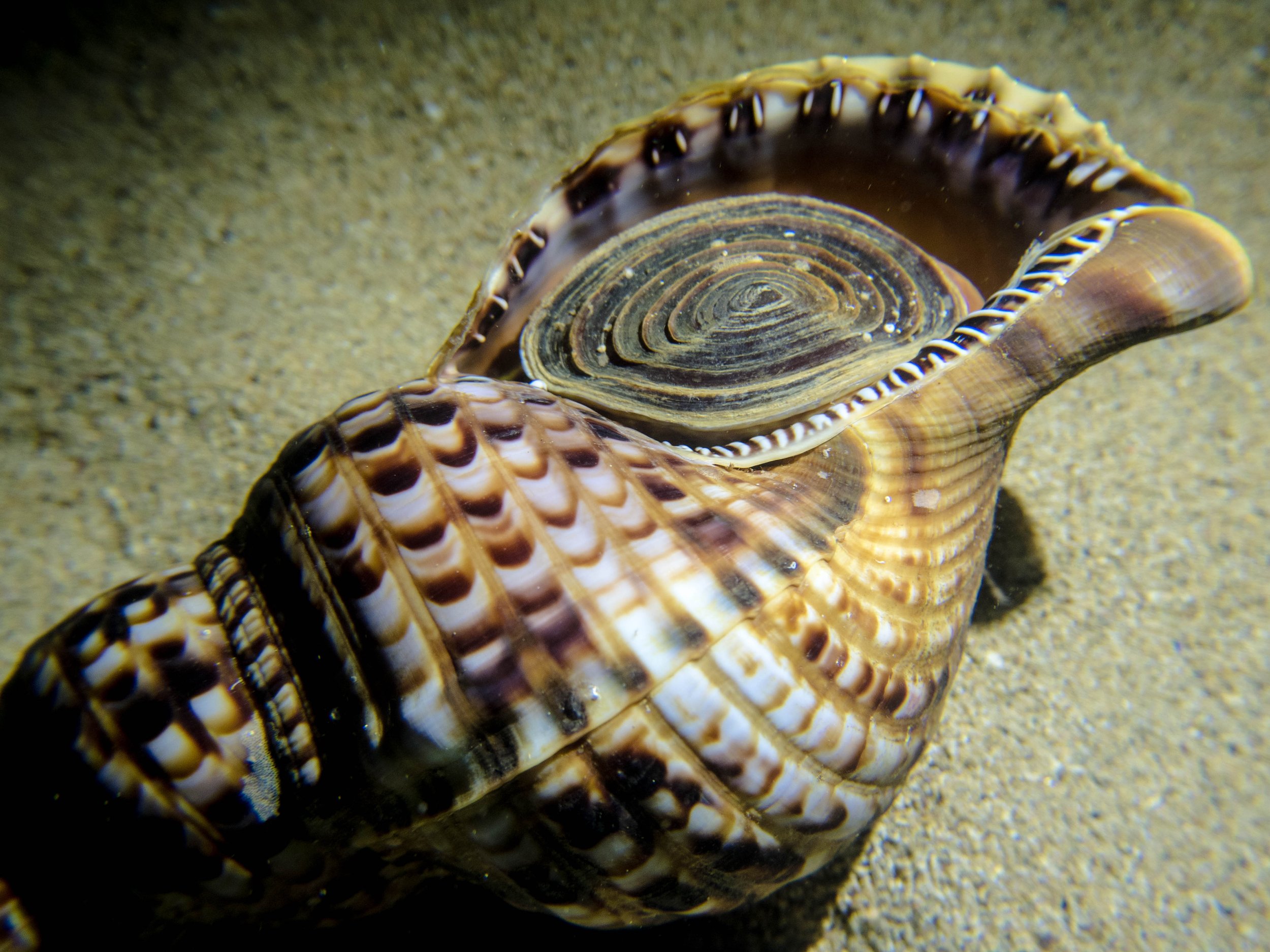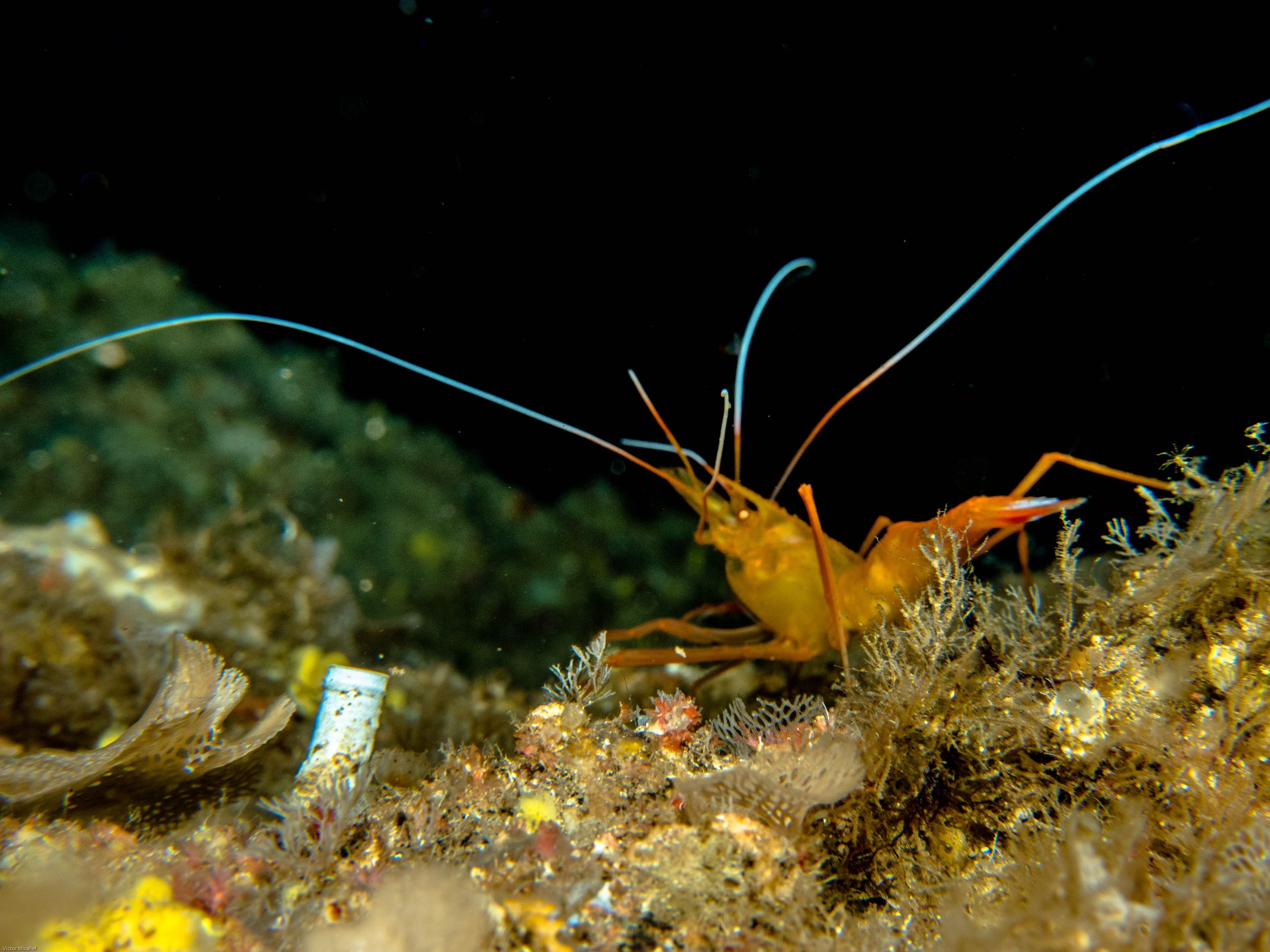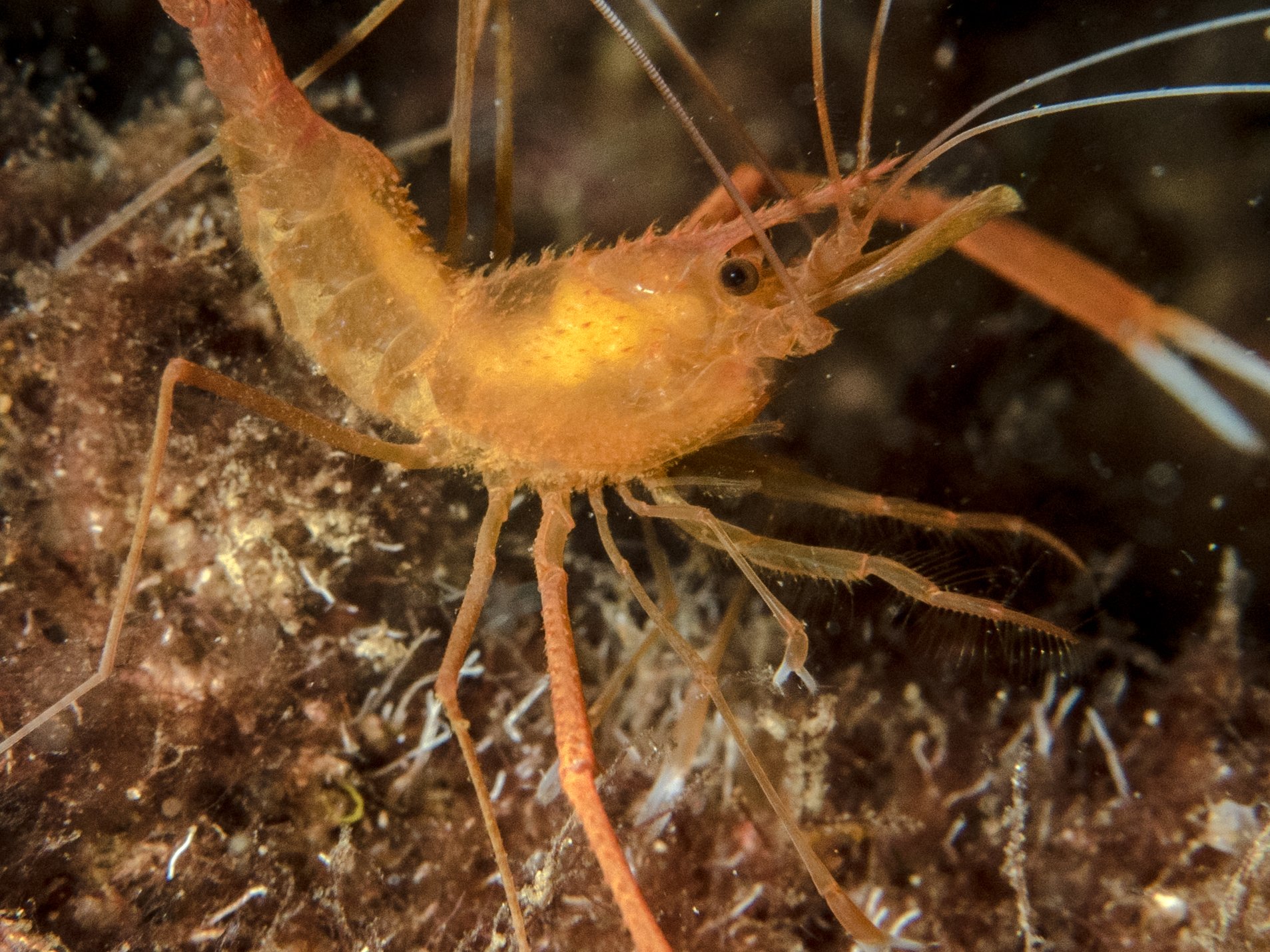Flatworms
Most of the flatworms in class Turbellaria are marine and all members of this class have top to bottom compressed bodies with high surface area to volume ratios. The species that reside in marine habitats are colourful




Giant Triton
The giant triton is an active predator and is known to aggressively chase its prey, which it detects with its excellent sense of smell. It prefers to eat other snails and sea stars, most notably the crown-of-thorns starfish.
Large outbreaks of the crown-of-thorn starfish, which feed on reef-building corals, are known to threaten the health of coral reefs. The giant triton is one of the only natural predators of that starfish. For that reason, this species is considered by the Australian government to be extremely important to reef health and is given legal protection in that country and others. Once the giant triton chases down a snail or starfish, its venomous saliva paralyzes the prey.
The marine snail grabs its food using its foot and saws through the starfish’s skin with its radula. Upon penetrating the skin, the Giant Triton will paralyze the prey with its saliva and feed at its leisure. The saliva of this sea snail contains sulphuric acid and is able to dissolve the calcareous bodies of sea urchins.
The Triton does not paralyze smaller animals; instead, it eats them whole. They spit out poisonous or unwanted shells, spines, and parts later, but they will attempt to eat most edible animals in their path.





Tun shells
The Tonnidae are a family of medium-sized to very large sea snails, known as the tun shells.
The name tun refers to the snails' shell shape, which resembles wine casks known as "tuns".
Being nocturnal, they bury themselves under the sand during the day.






Stenopus Spinosus
Did you know that the stenopus spinosus is a type of "cleaner shrimp"?
To label a shrimp species a "cleaner shrimp" it has to be documented on video or on a sequence of photos picking something from the surface or the mouth of a "client species". This condition is rarely fulfilled but in the case of this shrimp this was achieved last year (2020) in Madeira Island where a Mediterranean cleaning shrimp was documented in a symbiotic cleaning relationship with a Moray eel.









Unicorn Shrimp
This shrimp dwells in deep caverns. It can grow up to 10cm and is quite often seen with blue eggs attached to the underside. Like many other shrimp species, it starts life as a male and changes to female as it matures.
These photos were taken at shrimp cave at Reqqa Point in Gozo


